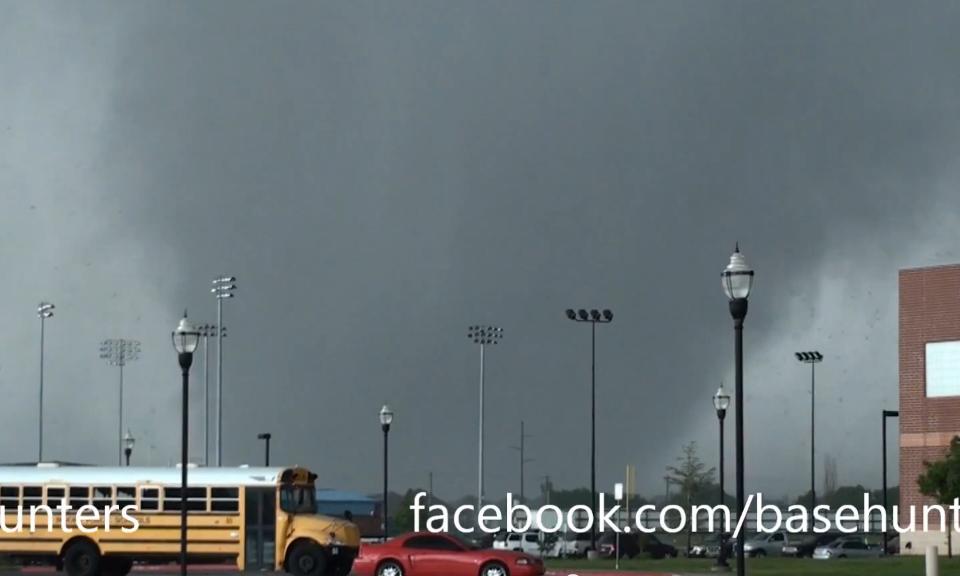Tornadoes form in unusually violent thunderstorms
when there is sufficient (1) instability and (2) wind shear present in the lower atmosphere.
Instability refers to unusually warm
and humid conditions in the lower atmosphere, and possibly cooler than usual conditions in the upper atmosphere.
Wind shear in this case refers to the wind direction changing, and
the wind speed increasing, with height. An example would be a southerly wind of
15 mph at the surface, changing to a southwesterly or westerly wind of 50 mph at 5,000 feet altitude.
This kind of wind shear and instability usually exists only ahead of a cold front and low pressure system.
The intense spinning of a tornado is partly the result of the updrafts and downdrafts in the thunderstorm
(caused by the unstable air) interacting with the wind shear, resulting in a tilting of the wind shear to form an upright tornado vortex.
Helping the process along, cyclonically flowing air around the cyclone, already slowly spinning in a
counter-clockwise direction (in the Northern Hemisphere), converges inward toward the thunderstorm,
causing it to spin faster. This is the same process that causes an ice skater to spin faster when
she pulls her arms in toward her body.
Other processes can enhance the chances for tornado formation.
For instance, dry air in the middle atmosphere can be rapidly cooled by rain in the thunderstorm,
strengthening the downdrafts that asist in tornado formation. Notice that in virtually
every picture you see of a tornado the tornado has formed on the boundary between dark clouds
(the storm updraft region) and bright clouds (the storm downdraft region), evidence of the importance
of updrafts and downdrafts to tornado formation.
Also, an isolated strong thunderstorm just ahead of a squall line that then merges with the squall line often becomes tornadic;
isolated storms are more likely to form tornadoes than squall lines, since an isolated storm can form a more symmetric flow
pattern around it, and the isolated storm also has less competition for the unstable air which fuels the storm
than if it were part of a solid line (squall line) of storms.
Because both instability and wind shear are necessary for tornado formation, sometimes weak tornadoes
can occur when the wind shear conditions are strong, but the atmosphere is not very unstable. For instance, this sometimes
happens in California in the winter when a strong low pressure system comes
ashore. Similarly, weak tornadoes can occur when the airmass is very unstable, but has little wind shear. For instance,
Florida -- which reports more tornadoes than any other state in the U.S. -- has many weaker tornadoes of this variety.
Of course, the most violent tornadoes occur when both strong instability and strong wind shear are present, which in the U.S. occurs
in the middle part of the country during the spring, and to a lesser extent during fall.
Contrary to popular opinion, tornadoes have not increased in recent years.
|



